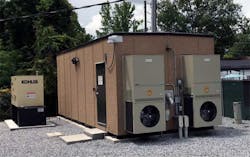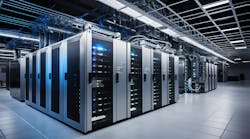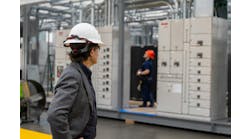Telecom tower specialists are stepping up the pace of their edge computing deployments as they lay the groundwork for a larger business opportunity in the future, executives of tower operators said in recent earnings calls with Wall Street analysts.
With the emergence of edge computing, a growing number of wireless companies have been acquiring assets in the data center sector, preparing for a future with greater integration between data centers, telecom towers and antennas.
Edge computing moves data processing and services as close to the end user as possible. The trend has driven by the increased use of consumer mobile devices, especially consumption of video and virtual reality content and the growth of sensors as part of the Internet of Things. But edge computing also supports business-to-business applications that require low latency.
Tower companies like American Tower and SBA Communications are emerging as potentially major players in the cloud landscape, with the ability to build, buy or partner with other edge-focused companies. These companies have real estate at the base of call towers around the world and have been learning the data center business to understand the components of a successful edge computing network.
The approach taken by these key infrastructure players reflects the larger realities for the growth of edge computing, which has not kept pace with some of the early projections of massive growth. But edge-focused deployments have accelerated over the past two years, with cloud platforms and content delivery specialists stepping up their investments, and the tower companies intend to be key stakeholders in this ecosystem.
American Tower
American Tower is working toward a future in which its network of 43,000 communications towers across North America will serve as extension of the cloud, bringing content from massive server farms to the edge of the network.
Data centers will be the connective tissue in the company’s vision for edge computing, which is why American Tower paid $10.1 billion to acquire data center operator CoreSite last year. That strategy continues to move ahead, as American Tower refines its strategy.
"Over the next several months, we plan to break ground on our first 1 megawatt edge facility and an owned tower site to build upon our understanding of market demand and customer requirements," said Tom Bartlett, the President and CEO of American Tower, who said the company seeks to "design a blueprint that can be rolled out at scale as the edge ecosystem develops and demonstrate the differentiated value proposition at American Tower and CoreSite can offer potential customers.
"To date, our team has identified over 1,000 sites within our existing US tower portfolio that we see as shovel-ready candidates for mobile edge deployment based on location, parcel footprint, land control and existing fiber and power access," Bartlett added.
The CoreSite deal was a bold move into the data center business for American Tower, which is the world’s largest owner of wireless infrastructure. It has been actively exploring opportunities in edge computing that would allow it to monetize edge capacity at its thousands of tower sites. But American Tower has discovered the current gateway to the edge is the core of the network, where CoreSite is an experienced player.
"Having now owned CoreSite for more than three quarters, we couldn't be happier with the performance we're seeing across the business and the use cases driving leasing activity, which we expect to serve as growth catalysts well into the future," said Bartlett.
"As we look further out, we expect workloads to become even more distributed and localized," he continued. "Therefore, we see the importance of an interconnection hub like CoreSite increasing as customers look to future-proof their digital businesses ... as businesses shift to more customized hybrid multi-cloud IT environment - and importantly, require an extended edge computing presence to support evolving low latency applications."
American Tower's strategy seeks to position the company for an evolving landscape in which historic boundaries between different infrastructure classes begin to blur.
"The mobile edge is emerging as a critical area in the convergence of wireless and wireline network," said Bartlett, adding that American Tower envisions "forging a partnership with cloud and enterprise technology platform to better prepare for the network demands of the future."
SBA Communications
SBA Communications President and CEO Jeff Stoops said the company hopes to build a significant edge computing network, which will include both data centers and infrastructure at the base of its towers.
"We’ve actually seen some great progress," said Stoops. "We probably have 30 to 40 of these facilities either in operation or under construction. The primary demand for them has been Edge computing and fiber and cable regeneration.
"On an absolute basis, we’ve seen a lot of growth," said Stoops. "On a financial basis, it’s still, of course, very small. But we’re encouraged by what we’ve seen."
SBA operates more than 30,000 tower sites, and has acquired two data centers - the JaxNAP carrier hotel in Jacksonville and the New Continuum Data Centers in Suburban Chicago - to form the nucleus of its SBA Edge business. The company says it has analyzed its network to identify about 8,000 potential edge sites.
"We’re really happy with the incremental return on invested capital for these projects," said Stoops. "They are mostly 6x12 or 10x20-foot shelters that look like the traditional wireless shelter that certain carriers have used historically. They have got air conditioning. They have got a lot of logistics to check temperatures and alarms. They basically are for racks of equipment, and they start out with two or three rack capacity and can be expanded beyond that."






